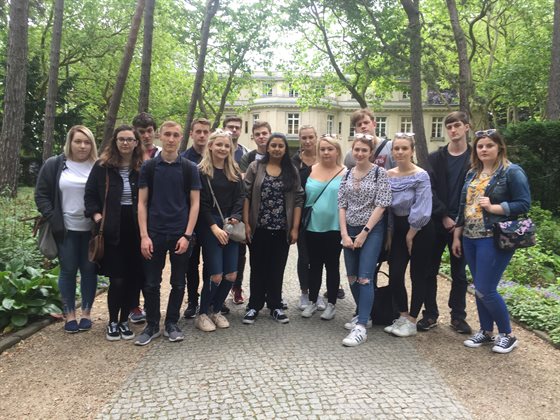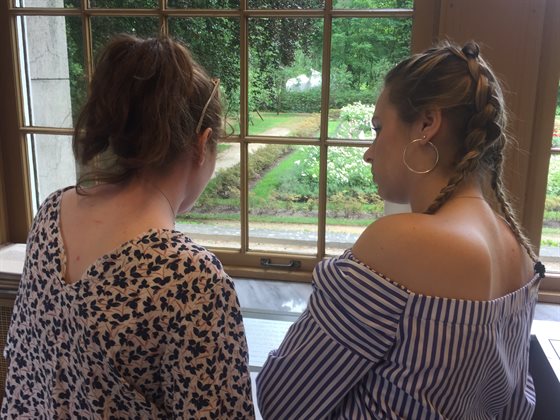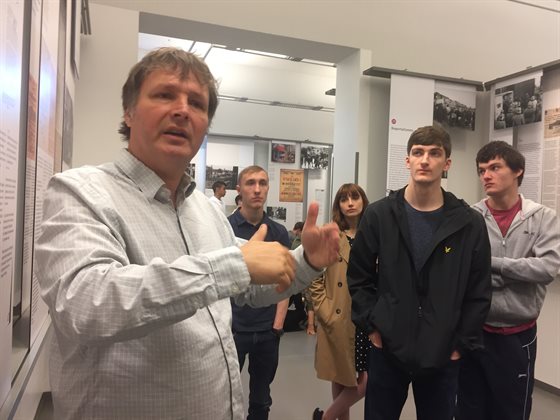History students from De Montfort University Leicester (DMU) visited the House of the Wannsee Conference in Berlin for a chilling lesson in how the Nazis set about implementing their “final solution to the Jewish question” during the Second World War.
They went to the former SS villa – sitting by a lake in a quiet, affluent suburb of the German capital – where in 1942 15 high-ranking party officials held a 90-minute work meeting, with breakfast after, to discuss the best way of implementing their plans to murder the 11 million Jews of Europe.

Dr Matthias Hass, who works in the education department of what is now a Holocaust memorial, museum and archive, explained how the 15-page Wannsee Protocol was intended to “streamline the procedure of establishing extermination camps for systematic mass murder”.
He added: “The fundamental difference between this and other memorials is that they are usually sites to remember the victims; this is the place of the perpetrators.”

Second-year History student Jessica Cretney said: “It was fascinating to experience this from a German academic view; so often we only hear from British or American historians. This has always been a part of the Final Solution I’ve been very interested in and to be here, to have it laid out, is very special. It’s a fantastic opportunity for History students and ties in very well with what we’ve been learning at DMU.”
Callum Christie, in his first year, said: “Going back through all the small details of the protocol in the main conference room was incredible. These were all educated, professional men who managed to do all this without any moral compunction.”
RELATED NEWS
Visit the Berlin trip page to follow our students’ activities in real-time
Berlin-bound History student grabs DMU opportunities with both hands
Unique insight into social work on the streets of Berlin
Kirsty Jones, in her first year, said: “This visit has been really insightful and I think to truly understand the significance of the conference, you need to be here. Just seeing the same lake views those men did and walking these same corridors is overwhelming. I want a career in teaching history and rather than just referring to a book I can say I’ve been there. Berlin has been incredible – as soon as you get here you can just feel the history.”
Sarah Snowdon, in her second year, said: “This has really brought our studies to life. It’s shocking to know that the fate of millions of people was decided in this room at a short meeting before breakfast.”

Panikos Panayi, DMU’s Professor of European History who arranged the visit, added: “Dr Hass was brilliant. He just gave such an in-depth interpretation about the bureaucracy and banality of evil – just who is responsible, morally and legally?
“This trip is directly linked to our studies but more broadly it really fits in well with the values of #DMUglobal. As someone who lived in Germany and who has non-British origins, I do #LoveInternational and feel a citizen of the world.”
Professor Panayi will also be taking his students to the Gesundbrunnen Bunker and Sachsenhausen concentration camp, among other historic sites, as part of our #DMUglobal trip to Berlin.
Posted on Wednesday 14 June 2017